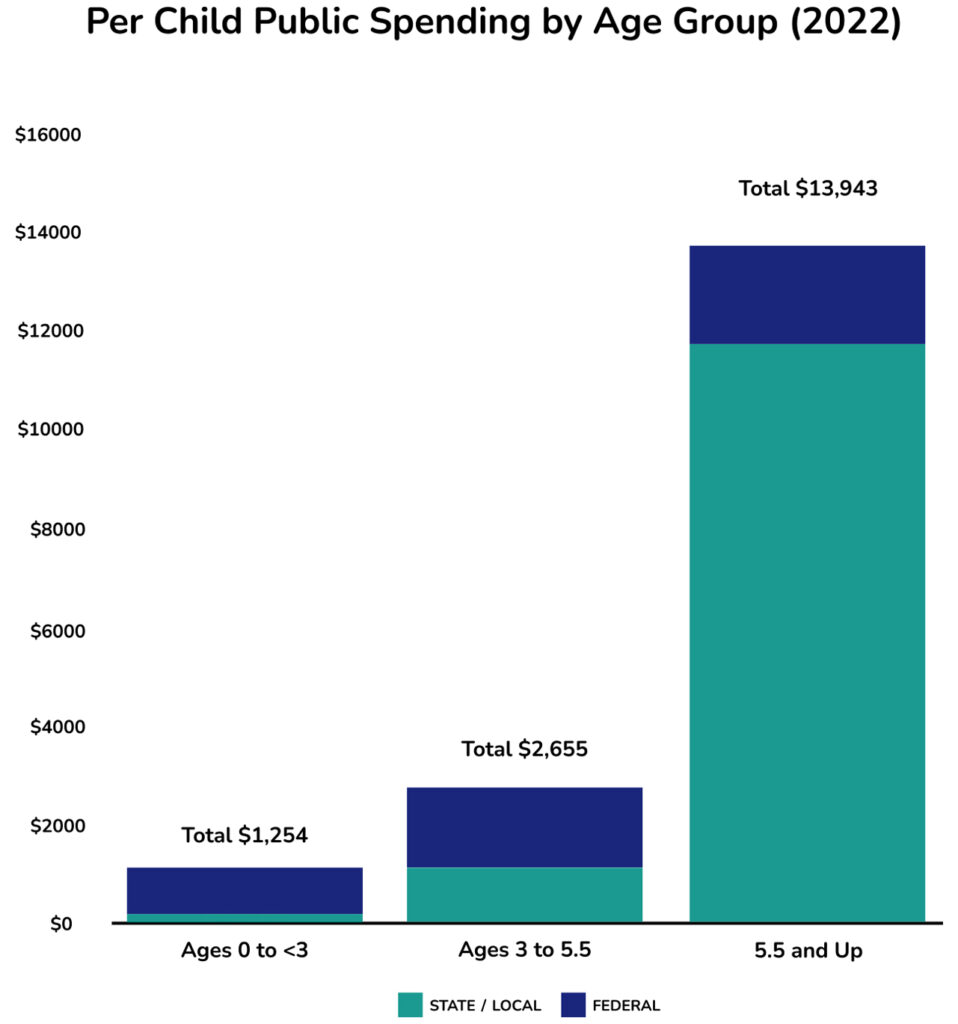About the Project
The Shortchanged Project aims to analyze all early learning funding streams together and chronicle how much – or little – we spend on the care and education of children before they enter elementary school nationally, state-by-state, and over time. This varies considerably among states, which the Shortchanged Project is also working to capture (see our map tab for state specific expenditures). However, in every state, early learning remains shortchanged.


The Numbers
The differences found in investments in children before and after they enter kindergarten are stark. t the national level, for every dollar spent on a child during their K-12 years, only 9 cents were spent on infants and toddlers and 19 cents were spent on preschoolers. The graph to the left shows wide disparities in public care and education spending by age group.
Tracking Funding
Tracking early learning funding is no small task. Though politicians and media often talk about “preschool” or “child care” as one cohesive birth-to-five policy system – and in an ideal world it would
be – the way early learning is funded in the U.S. has created a fractured system that is exceptionally hard to capture in raw numbers. Child care is funded and administered differently than public Pre-K. Public Pre-K is funded and administered differently than Head Start. Early Head Start is funded and administered differently than home visiting, and so on. These publicly funded programs are run by different federal and state agencies, with separate goals, rules, and reporting systems that do not translate easily to one another, even though children are frequently served by multiple funding streams simultaneously.

The Shortchanged Project takes a significant step towards creating an accurate account of the sum total of public funding spent on early care and education in the U.S. In the Shortchanged Project, we define and track public spending on early care and education and disaggregated these dollars by age group—infants & toddlers, preschoolers, and school-age children. We then compared public care and education spending for the younger age groups to public spending on older children to measure how close – or how far apart – these investments are. We define public early care and education funding as federal, state, and local dollars that are dedicated for children birth to kindergarten-entry including: home visiting, child care, preschool, Pre-K, and Head Start, Child and Dependent Care Tax Credits, and early intervention and special education services.
How we defined public ECE spending
We analyzed federal and state funding streams that support home visiting, child care, preschool, and early intervention and special education services for children birth to kindergarten-entry.
Why we count spending per child
We believe that every child born in the U.S. should have access to appropriate early learning environments like every child has access to public education. We count the number of children living in each state in each age group, rather than by the number of children served by each program.
How we designated age groups
We disaggregated funding streams based on infants and toddlers (birth to third birthday), preschoolers (ages three to five years, six months), and children in the K-12 system (ages five years, six months to eighteen years, six months).
Why we used 2022 data
This was the latest consistently available data for every federal funding stream we analyzed.